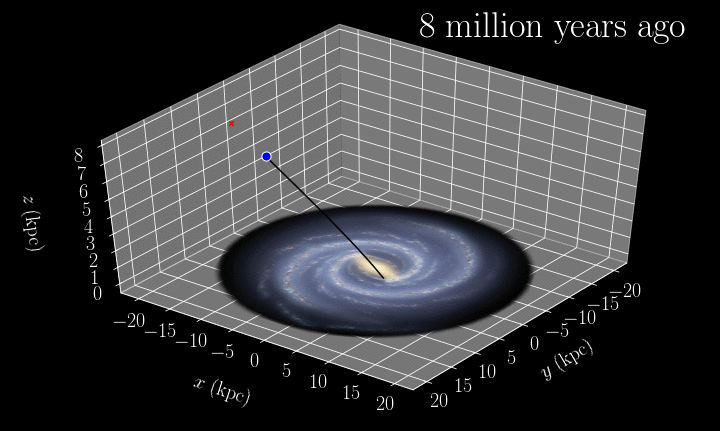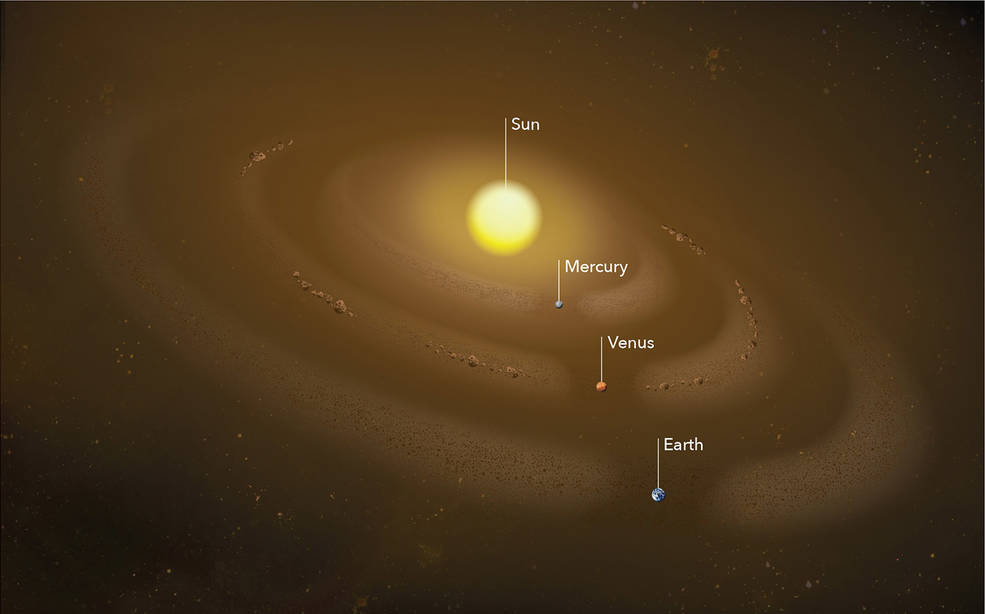
Recorded during the Astrotour to Costa Rica, Fraser talks to Dr. Paul Matt Sutter about the nature of dust and BICEP 2’s claim of discovering primordial gravitational waves.
Continue reading “Astronomy Cast Bonus Episode: Dust with Dr. Paul Sutter”

Space and astronomy news

Recorded during the Astrotour to Costa Rica, Fraser talks to Dr. Paul Matt Sutter about the nature of dust and BICEP 2’s claim of discovering primordial gravitational waves.
Continue reading “Astronomy Cast Bonus Episode: Dust with Dr. Paul Sutter”
People always want to know how old everything is. And more specifically, they want to know how we know how old everything is. Well, here at Astronomy Cast, it’s our job to tell you now only what we know, but how we know what we know. And today we’ll begin a series on how we know how old everything is.
This is part one of a double episode.
Continue reading “Astronomy Cast Ep. 522: Judging Age & Origins, part 1 – Earth Rocks”
This week’s Carnival of Space is hosted by Allen Versfeld at his Urban Astronomer blog.
Click here to read Carnival of Space #603.
Continue reading “Carnival of Space #603”

Looking to the future, NASA and other space agencies have high hopes for the field of extra-solar planet research. In the past decade, the number of known exoplanets has reached just shy of 4000, and many more are expected to be found once next-generations telescopes are put into service. And with so many exoplanets to study, research goals have slowly shifted away from the process of discovery and towards characterization.
Unfortunately, scientists are still plagued by the fact that what we consider to be a “habitable zone” is subject to a lot of assumptions. Addressing this, an international team of researchers recently published a paper in which they indicated how future exoplanet surveys could look beyond Earth-analog examples as indications of habitability and adopt a more comprehensive approach.
Continue reading “Which Habitable Zones are the Best to Actually Search for Life?”A dramatic week in space launcher politics has left NASA’s Space Launch System (SLS) with a vastly reduced launch manifesto and casts doubt on the prospects of future upgrades to the massive launch vehicle.
On Monday the White House’s budget request laid out the administration’s plans for NASA’s coming years. For SLS there were three significant changes.
Continue reading “SLS Rocket Promises To Do Better”When it comes to the future of space exploration, the name of the game is “save money”. To do this, space agencies and aerospace companies around the world are investing in things like reusable rockets, single-stage-to-orbit (SSTO) rockets, and reusable space planes. This last concept builds on the tradition established by the Space Shuttle and Buran spacecraft, two reusable vehicles designed to make space launches more affordable.
The one drawback of these spacecraft was the fact that it still took two rocket boosters and a huge external fuel tank to put them into orbit. This is where the Synergetic Air Breathing Rocket Engine (SABRE) comes into play. With the help of the European Space Agency (ESA) and the UK Space Agency (UKSA), this revolutionary hypersonic engine recently took a big step towards fruition.
Continue reading “Progress for the Skylon. Europe agrees to continue working on the air-breathing SABRE engine”2,000 light years away, in the Orion constellation, lurks an eerie looking creature, made of glowing gas lit up by young stars: the Cosmic Bat.
Its real name is NGC 1788. It’s a reflection nebula, meaning the light of nearby stars is strong enough to light it up, but not strong enough to ionize the gas, like in an emission nebula. Even though the stars are young and bright, the Cosmic Bat is still hidden. It took the powerful Very Large Telescope (VLT) to capture this image.
Continue reading “Do You See the “Cosmic Bat” in NGC 1788?”
Every once in a while, the Milky Way ejects a star. The evicted star is typically ejected from the chaotic area at the center of the galaxy, where our Super Massive Black Hole (SMBH) lives. But at least one of them was ejected from the comparatively calm galactic disk, a discovery that has astronomers rethinking this whole star ejection phenomenon.
Continue reading “This Star has been Kicked Out of the Milky Way. It Knows What It Did.”You never forget your first one. I remember reading about a curious new set of flaring satellites, known as Iridiums. This was waaaaay back in the late 1990s, when we still occasionally read things in something called magazines, which involved pressing ink into plant-flesh to convey information.
Fast-forward to 2019, and the age of the predictable Iridium flare may be coming to an end. Already, scrolling through Heavens-Above reveals very few Iridium flares for the coming months, and these familiar nighttime flashes may become a thing of the past come the end of the decade in 2020.
Continue reading “The Iridium Flare Era is About to End”
Discovering new things in space is a regular occurrence. Astronomers keep finding more distant objects in the outer reaches of the Solar System. Worlds like ‘The Goblin,’ ‘FarOut,’ and ‘FarFarOut‘ are stretching the limits of what our Solar System actually is.
But finding new things in the inner Solar System is rare.
Continue reading “New Ring of Dust Discovered in the Inner Solar System”